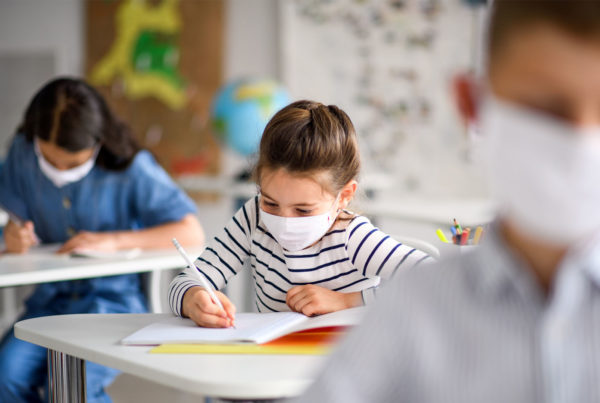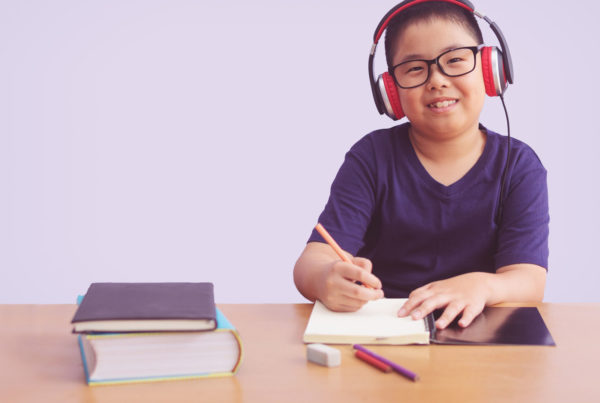The topic of climate change might be one of the most important conversations kids can have with adults. Too often with sensitive topics, parents and professionals fear they will frighten children, or they might not know the right words to use. Whether the dialogue surrounds sex, drugs, climate change, or global annihilation, now more than ever we need to bring the subject into the light of day. In this way we help young people and grownups cope with climate anxiety and depression and seek positive action for ourselves and the planet.
Kids today are savvy, and many have been referred to as digital natives. Their ability to glide through social media and navigate the web often puts their parents to shame. They usually get their information from peers or TV, Facebook, Instagram, and more. But is it accurate or a compilation of opinions, and can we be sure our youngsters are processing information effectively – especially what they are seeing and hearing?
Eco-anxiety
Eco-anxiety has become a common term regarding climate change. Medical News Today defines it as “a fear of environmental damage or ecological disaster. This sense of anxiety is largely based on the current and predicted future state of the environment and human-induced climate change (Huizen, 2019).” It often appears in children as a constant worry about the environment, the future, and is accompanied by a sense of inability to control what is happening. This persistent feeling of helplessness is exacerbated by media images and sounds surrounding climate-related extreme weather conditions such as wildfires, floods, droughts, and hurricanes. This constant bombardment of facts and fiction experienced by the young, from preschoolers to college students, leaves them with fearful, even terrifying emotions about their future and the future of their planet.
The American Psychological Association (APA) has recognized the “profound connection between climate change and mental health, that the changing environment is a legitimate source of distress already affecting many young people, and it has the potential to be psychologically destabilizing (Schlanger, 2017).” This anxiety and depression children feel is a basic understanding when exploring conversations about climate change. Presenting facts, positive outcomes, actions, and role models helps to dissolve worry and promote resilience.
The Real Talk about Birds and Bees
When talking to young people about climate change, it is critical to present age-appropriate facts, listen to feelings, validate fears, affirm desire for action, and create a non-judgmental foundation of discussion that can be fostered throughout their growing up. At an early age, these conversations serve as a foundation to build more complex understandings as kids mature. Ask youngsters to explain what they have heard about climate change and help them differentiate fact from fiction and misinformation. Often little children will take what they hear literally, and distinguishing misconceptions can help eliminate false ideas.
Six-year-old Emma was watching TV and was inundated with the wildfire images in California, and the disastrous forecast of smoke spreading through the country. “We have to move!” she shouted to her dad. “The smoke will kill us if we stay here!” Emma’s parents were wise enough to take out a map to visually reassure her living in Washington D.C. was a safe distance from wildfires reaching them. Her teenage brother Adam also saw the news and decided to wear his mask every time he went outside to guard against toxic smoke. Both reactions of Emma and Adam were fertile grounds for discussion.
Building a Love of Nature
We often forget we can provide children with a virtual classroom, devoid of walls, and filled with the beauty and abundance of the environment. This classroom is nature. Being in greenery is refreshing and relaxing, and actually enhances a feeling of happiness for children.
Sophia lived in a poverty-stricken area in California. The only nature she experienced was visiting the California National Park. Due to the devastating wildfires, the National Forests in California closed to visitors as a precautionary measure of safety. When Sophia heard about this closing on the news, she began to sob. “Mom!” she cried out, “We can’t go to the park. It’s not fair. I’ll miss the trees!” The despair that her special, peaceful place in nature was unavailable made her very sad.
In 2020 Timiny Bergstrom researched the impact of nature on third graders and found their happiness, attention, and calm levels rose after time spent in a green schoolyard. Ms. Bergstrom’s research project, The Positive Impacts of a Nature Experience for Third Graders, concluded what Timiny instinctively knew, and research validated – nature provides stress reduction and attention restoration. She concluded, “As it becomes more apparent that time spent in nature is good for humans and children in particular, it is time to consider whether nature experiences have a role in and should be consistently implemented in public education by further investigating the value and the positive impacts of nature experiences for elementary age students (p.6).” Findings indicated nature is innately restorative and directs attention from the fatigue of the digital world to a simpler connection of being present in the moment.
Suggestions for Climate Change Conversations
The following are practical suggestions to dialogue with young people about nature, climate change, climate actions, and climate fears and hopes in a constructive way.
1. Build a checklist of environmental activities
-
- Plant seeds and care for a family garden
- Turn water off when brushing teeth
- Throw trash away
- Use both sides of paper
- Feed the birds
- Make toys from things around the house
- Recycle
- Compost
- Turn off lights
- Bike instead of drive
- Walk to school
- Family hikes
2. Make a family or classroom emergency kit. Kids feel safer if prepared for emergency events. They can discuss what they think is important and create a kit and a designated space for it. Some items to include are:
- Water
- Energy Bars
- Phone numbers
- Batteries and chargers
- Powdered milk
- A whistle
3. Promote interest and concern about the environment by seeking informative websites.
–National Geographic Kids (https://kids.nationalgeographic.com) This website encourages youngsters to question if they are Habitat Heroes, Biodiversity Champions, Climate Change Warriors, or Pollution Preventers by taking a quiz that unfolds their specific interests.
–Parachutes for the Planet (https://motherearthproject.org/parachutes) This website is an international project for young people to create parachutes at school, home, or in their community to express feelings and actions about climate change. It is a global endeavor and part of the Mother Earth Project.
-Meatless Mondays. (https://www.nrdc.org/stories/new-york-city-students-are-taking-climate-change-starting-lunchroom) It is an initiative sweeping school cafeterias to lessen the climate impact of weekday lunches.
4. Create an honest and non-judgmental environment. Honor children’s questions, use age-appropriate language, ask kids to explain what they already think they know. In this way a continuous space for dialogue is created and extended throughout growing up.
5. Monitor TV and media information. Young people easily glean information from technology, and it is helpful to screen media input and use factual climate change data as teachable moments for exploration and dialogue
6. Seek acceptance of school-based curriculums. These curriculums would include progressive, factual information and promote abilities to discern fact from fiction, generating dialogues that can continue through the grades.
7. Maintain a resource library for adults and children. The following examples for adults and children contribute to realistic conversations promoting resilience, action, and validation.
Conclusion
As caring adults our goals must be those that reassure children that they are safe, they are listened to, and they are not alone. We must reaffirm to young people they do no need to carry the burden of climate change – that all generations will join their pleas for a healthy planet. The first step is age appropriate, meaningful, and honest conversations that respects kid’s feelings, honors their wisdom, and acknowledges their innate love for Mother Earth.
Adapted from Climate Change and Youth: From depression and anxiety to activism. In-press 2022. Routledge. © Linda Goldman. All rights reserved. www.grievingchildren.net
Watch for Part Two of “Talking to Kids about Climate Change” in a future issue of Healing Magazine!
References
Bergstrom, Timiny E. December 18, 2020. The Positive Impacts of a Nature Experience for Third Graders. Southern New Hampshire University. Pp. 1-44.
Huizen, Jennifer. December 19, 2019. What to know about eco-anxiety. Medical News Today. https://www.medicalnewstoday.com/articles/327354
Goldman, Linda. In-press 2022. Climate Change and Youth: From anxiety and depression to activism. New York: Routledge.
Schlanger, Zoe. April 3, 2017. We need to talk about “Ecoanxiety.” Climate change is causing PTSD, anxiety, and depression on a mass scale. https://qz.com/948909/ecoanxiety-the-american-psychological-association-says-climate-change-is-causing-ptsd-anxiety-and-depression-on-a-mass-scale/






